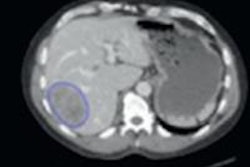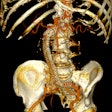Dear Advanced Visualization Insider,
As advanced image processing goes, wavelet transform, based on an algorithm developed in Germany, seems to have a lot going for it in CT angiography (CTA) of the head.
Far beyond the performance of maximum intensity projections and other techniques to enhance contrast, wavelet transform boosts signal-to-noise ratios as much as ninefold in 3D CT datasets while improving overall image quality.
Earlier, we brought you a story on the development of this advanced tool to enhance CTA; today's story looks at wavelet CTA's performance in revealing small-vessel occlusions that CTA misses in ischemic stroke. Investigators from Ludwig Maximilian University of Munich tackled the thorny problem of patients who appear to have perfusion deficits on CT but zero evidence of vessel occlusion at CTA. Look for their intriguing results here.
Brain aneurysm surgery is becoming a little less perilous for surgeons who are using a new technique that combines rotational digital subtraction angiography with 3D ultrasound. The combination allows real-time visualization of vessels beyond the microscopic field, along with a parallel assessment of blood velocity, the aneurysm, and the complete configuration of the vascular tree in real-time. Find out more in an article here.
Texture analysis software has been applied to many different kinds of CT images in an effort to glean more information, such as about malignancy or benignity, with mostly positive results. Now researchers from University College of London are using it to predict liver cancer outcomes. Learn more in an article from the recent ECR 2015 that you'll find here.
In this brave new 3D world, students continue to be shortchanged by reviewing mostly 2D images -- and they probably aren't doing as well on their exams as a result, according to a new study from University Medical Utrecht in the Netherlands that found better volume estimations and more when students were allowed to evaluate 3D images. Click here to get the story.
A new computer-aided detection system finds even previously missed breast cancers, according to a new report from Radboud University Nijmegen Medical Center in the Netherlands that concluded that most cancers could have been detected earlier with use of the system in screening. Get the rest of the story here.
Finally, automated perfusion mapping is a great way to get answers fast -- but it's simply not accurate enough for routine use, according to investigators from Italy. What went wrong? Click here. And be sure to scroll through the links below for more cutting-edge coverage in your Advanced Visualization Community.















